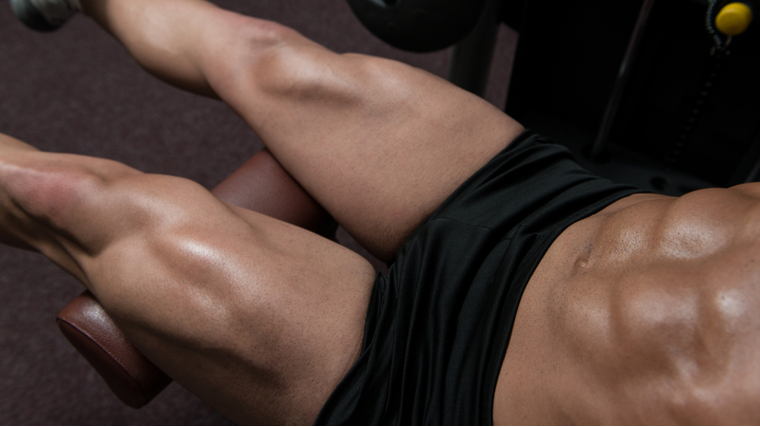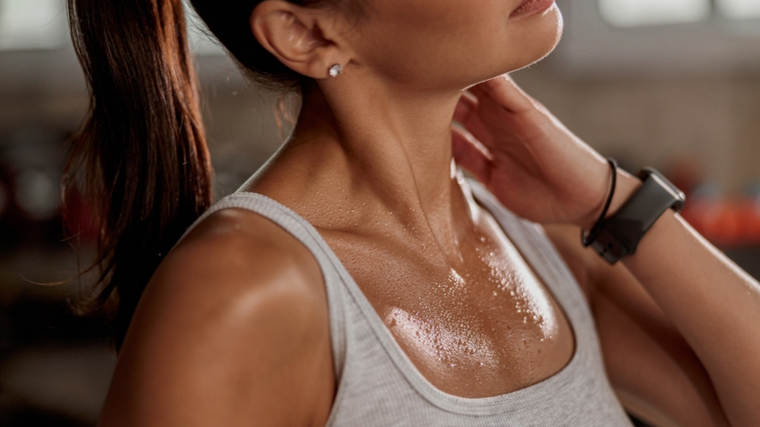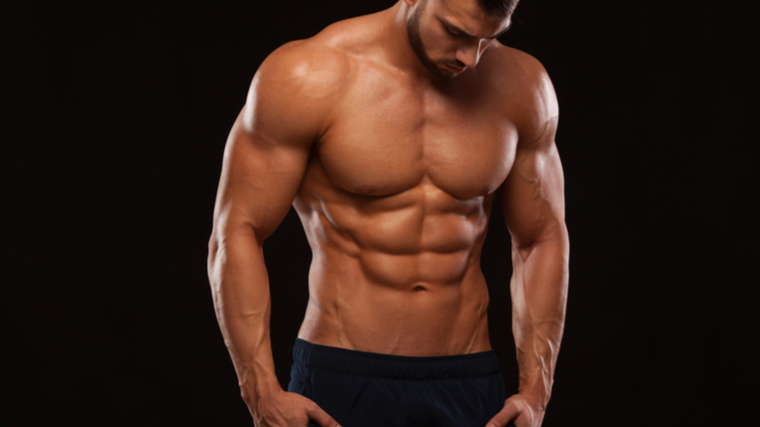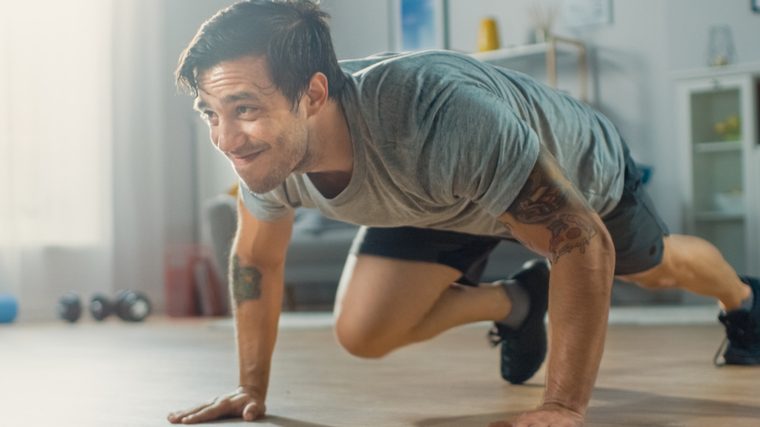Want to Build a Complete Physique? Don’t Forget to Train These Overlooked Muscles (original) (raw)
What do you notice when you look at a bodybuilder on stage? Most people are drawn to the big, glamorous muscles.
A pair of pecs you could balance a beer can on. Legs that absolutely do not, under any circumstances, fit into jeans off the rack. Abdominals that look more like a topography map than human anatomy.
These muscles may be your show-stoppers, but when it comes to building a really well-rounded physique, the devil is in the details. There are some muscles that can help turn your physique into more than the sum of its parts, even if you don’t plan on competing. Here’s how to train them properly, and why they matter.
The Most Overlooked Muscles in Bodybuilding
Editor’s Note: The content on BarBend is meant to be informative in nature, but it should not be taken as medical advice. When starting a new training regimen and/or diet, it is always a good idea to consult with a trusted medical professional. We are not a medical resource. The opinions and articles on this site are not intended for use as diagnosis, prevention, and/or treatment of health problems. They are not substitutes for consulting a qualified medical professional.
Hip Adductors
Squats and deadlifts work just about every muscle in your legs to some degree, but you might find that your hip adductors never get the same kind of skin-tearing pump that your quads receive at the end of leg day.
Where They Are
Your hip adductors are actually a collection of five different muscles located on the medial compartment of your upper leg. They perform many of the same functions and, for the most part, all originate on the pelvis and insert on the femur.

Credit: Jasminko Ibrakovic / Shutterstock
[Read More: The Best Leg Exercises for Your Next Leg Day]
Practically speaking, you can think of your hip adductors as one collective tissue. As the name implies, they adduct (or pull inward toward your midline) your thigh.
Why They Matter
If you want beefy, three-dimensional legs, you have to train your adductors. They help give shape to the silhouette of your lower body when viewed from the front and visually “balance” the outer sweep of your quads.
Your adductors also affect your performance, despite being a “smaller” muscle. Not only do your hip adductors assist with producing power as you complete a squat, underdeveloped or weak adductors may impact your balance and stability when working on one leg. (1)
Best Hip Adductor Exercises
The structure and function of your hip adductors make them tricky to train through conventional means, especially if you’re limited to using dumbbells or a barbell.
Since their anatomical role involves lateral movement, you’ll need to rely predominantly on machines or cables to stimulate your adductors thoroughly.
Hip Adduction Machine
You can find an adduction machine in most commercial gyms. Despite its funky design, it allows you to take your adductors through their complete range of motion without requiring you to balance yourself or load up a heavy barbell.
The pin loading is also a plus you can’t ignore. You can quickly and easily adjust the resistance simply by moving the peg up or down, which makes the hip adductor machine great for implementing high-intensity techniques like drop sets.
Cable Hip Adduction
If you don’t have an adduction machine in your gym, you can wrangle a suitable alternative by hooking a cable to your ankle and performing standing adductions.
This exercise demands that you balance yourself on one leg, but the cable will provide consistent and reliable tension to the inside of your thigh.
Lateral Lunge
Using a pair of dumbbells (or a barbell) to perform lateral lunges can be surprisingly effective if you’re trying to fit some adductor work into your standard leg day.
This exercise won’t isolate your adductors to the same degree as a cable or machine, but it does tax them isometrically and helps you develop dynamic hip stability at the same time.
Neck
The muscles in your neck are trainable like any other, which means they’re just as susceptible to hypertrophy and growth. That said, neck training requires delicacy and precision if you want to get it right.
Where It Is
The musculature of your neck is extremely intricate. There are well over a dozen small tissues that enable all the fine motor patterns such as tilting your head or tucking your chin.

Credit: Yaroslav Astakhov / Shutterstock
While there are some “primary” tissues like your sternocleidomastoid, suboccipitals, and even your upper trapezius, most of the small neck muscles aren’t important enough to warrant a mention from a training perspective.
Why It Matters
A thick and muscular neck is part of creating the coveted “yoked” look. If physique presentation is important to you, you don’t want to have traps stacked up to your ears but a scrawny neck by comparison.
Functionally speaking, a strong neck is also quite relevant to sports performance, particularly for contact sports like wrestling or mixed martial arts.
However, even if you use your neck muscles on the mats or field, research indicates that you probably won’t grow or thicken your neck to a meaningful degree unless you train it directly. (2)
Best Neck Exercises
Exercising your neck takes more than a little bit of creativity. You might feel a bit awkward setting up for neck exercises, but know that you can grow your neck just like any other muscle if you have the right tools at your disposal.
Prone Neck Extension
There aren’t too many options for loading and training your neck through its full range of motion. That said, you can lie prone on a bench and load the neck extension in multiple ways.
You can gently hold a plate on the back of your head, use resistance bands, or even strap into a head harness designed specifically for neck work.
Supine Neck Extension
This exercise is the inverse of the prone extension and works the opposing motor function.
By letting your head fall backward and then tilting it up against resistance (think a small plate held on your forehead), you can train the sternocleidomastoid and other anterior neck muscles.
Lateral Neck Extension
Your neck is capable of tilting your head from side to side, but this motion is extremely delicate. As such, you shouldn’t use much, if any, external resistance on this movement. If you lie on your side with your head suspended, the weight of your skull should be enough when you’re starting out.
[Read More: The_** **_Best Bodyweight Exercises , + Workouts and Tips From a CPT]
Note: While there’s nothing inherently dangerous about training your neck, you should proceed with extreme caution when incorporating neck exercises for the first time, even if you aren’t using weight.
The muscles in your neck are small and perform very discreet actions. Since you don’t use many of these muscles while you’re working out normally, they can be quite sensitive to stimulation. You should avoid performing neck exercises to failure, especially if you’re working with weights.
Serratus Anterior
You may not notice them when they’re missing, but a shredded set of serratus muscles are definitely eye-catching if they’re well-developed. While some lifters seem to get them by accident, others have to show their serratus a bit of direct love to see growth.
Where They Are
You can find your serratus pretty easily if you lift your arm. The serratus anterior are located on the sides of your torso and connect from your ribcage to your shoulder blade.
The serratus are primarily an assistive muscle — you’d be hard-pressed to find an isolation exercise that targets them directly. However, exercises that involve protraction, elevation, and extension of your shoulder will bring them into action pretty well.
Why They Matter
From an aesthetic standpoint, bringing up your serratus will do wonders for how muscular your torso looks. Prominent serratus anterior help frame your lats and add some extra definition to your midsection as well.
They’re not purely a glamor muscle, though. As they insert on the lower portion of your shoulder blade, your serratus anterior play a role in the overall health of your shoulder. If you have unstable shoulders or overly-dominant trapezius muscles, training your serratus may be a potent corrective tool. (3)
Best Serratus Anterior Exercises
You’ll generally get some degree of serratus anterior stimulation on most compound movements that involve your shoulders. However, you can slightly tweak certain movements to bring your serratus to the forefront even more.
Scapular Push-Up
Scapular push-ups are good for more than just growing your serratus. They also teach you to master the smaller, more specific motor functions of your shoulder blades.
You can tack on some scapular push-ups to the end of your standard push-up sets to blast your serratus as a finisher.
Dumbbell Pullover
The pullover is one of the most effective all-around torso builders you can perform. It’s a unique movement that trains your chest and back (and serratus) simultaneously.
You may not feel your serratus working during this movement, but trust that they’re providing plenty of assistive support on each rep.
Ab Rollout
The ab rollout is, essentially, the same movement pattern as a pullover. As such, it works your serratus anterior to a similar degree.
You can use the rollout as a mainstay movement in your next core workout and get some “free” serratus stimulation along with it.
Arnold Press
Most pressing movements will involve your serratus to at least some degree, but the Arnold press is particularly adept at getting them into the game.
When you perform an Arnold press properly, you’re required to rotate your arms during the eccentric portion such that your elbows point forward. The twisting motion of your arm, coupled with protraction at the shoulder, are what really engages your serratus anterior.
Tibialis Anterior
If you want to get really granular about your physique, you can find a bit of time during your training week to work on your tibialis anterior. You might be surprised by the impact training this muscle can have on how your legs look and feel.
Where It Is
The name gives it away in this case — your tibialis anterior is a thin strip of muscle located on the front of your shin. It originates near the top of your tibia by the knee joint and inserts across the ankle.

Credit: Jasminko Ibrakovic / Shutterstock
Your tibialis anterior has the limited, but essential, function of dorsiflexing your ankle joint.
Why It Matters
While the tibialis anterior is more of a concern for distance runners than bodybuilders, it’s still a muscle that you can train and grow to add a bit more volume and heft to the front of your shins.
From a performance perspective, you might want to give your tibialis anterior some love if you’re prone to shin splints or are struggling to improve your ankle mobility.
Most conventional wisdom around ankle mobilization involves stretching the joint, but strengthening the tissue that actually pulls your foot upward can affect the mobility of the ankle as well. (4)
Best Tibialis Anterior Exercises
There aren’t many ways to tackle the tibialis anterior in the gym. In fact, since the tissue only performs one specific and isolated action, you really only have one legitimate way to train it.
Loaded Ankle Flexion
If you’re lucky, you may have a small machine in your local gym meant for training the tibialis anterior specifically. You slip your feet in, load some plates up on each side, and squeeze.
Barring that, you can replicate the same motion with other tools. Looping a resistance band over your foot, or using a cable and a strap, can serve as an adequate replacement.
The difficulty in loading this motor pattern means that you’ll probably have to kick up your rep count to really fatigue your tibialis anterior.
Transverse Abdominis
Your core is a network of individual muscles (such as the transverse abdominis) that work in tandem to keep your trunk upright, contain the contents of your abdominal cavity, and support the transfer of force through your body while you lift.
Where It Is
Your transverse abdominis wraps around the side of your torso, underneath your obliques and covering your ribcage. Its fibers flow horizontally, in contrast to the vertical fiber orientation of the more superficial (and obvious) rectus abdominis.

Credit: Satyrenko / Shutterstock
Your transverse abdominis has a primary role of supporting your pelvic floor and lumbar spine. It is an assistive muscle that comes into play during the twisting, flexion, and rotational movements facilitated by your other core muscles.
Why It Matters
You can’t really see your transverse abdominis in the traditional sense, even if you have extremely low body fat levels. It may partially contribute to creating the coveted “V” lines of the lower abdomen, though that level of definition is quite dependent on your genetics.
However, the transverse abdominis is extremely active in supporting both your pelvic tilt and the curvature of your lumbar spine. (5) Training your transverse abdominis is an excellent way of maintaining upright posture and solid core activation for everyday life.
Best Transverse Abdominis Exercises
Most core movements will engage your transverse abdominis to some degree, but to really bias it via exercise, you have to start playing with your pelvic tilt and breathing habits.
Stomach Vacuum
The stomach vacuum is one of the most iconic poses in bodybuilding, but it does have a more “functional” purpose as well.
The transverse abdominis is one of the tissues responsible for maintaining a taut abdominal cavity, a quality you can train and refine with vacuums (along with loads of practice and patience).
Hollow Hold
Engaging your transverse abdominis is all about manipulating pelvic tilt. Since the muscle wraps around your trunk between your ribs and pelvis, movements like the hollow hold are a great way to zone in on your transverse abdominis.
You can apply this principle to other core exercises as well. As long as you emphasize a posteriorly-tilted (or tucked) pelvis, you’ll activate your transverse abdominis as well.
Training Tips & Tricks
It’s hard to fill a cup that is already full. If your workout plan has you in the gym four or five days a week, you might find it frustrating to fit in even more work for these smaller muscles. But with a bit of ingenuity, you can make it work.
Modify Your Existing Movements
Many of these tiny muscles can be effectively stimulated during compound exercises, as long as you make some small adjustments. For example, replacing your existing lunge or split squat with a lateral lunge will train your adductors just fine.
Further, you could superset tibialis anterior work between sets of calf raises to work the joint from both sides without adding too many minutes to your workout.
Do Them At Home
If you want to squat heavy, you need a barbell. The same holds true for the bench press and many other compound movements that necessitate you be in a gym (or have a very well-furnished home facility).

Credit: Gorodenkoff / Shutterstock
However, you can definitely train your neck, transverse abdominis, or tibialis anterior at home. The exercises that you use to work these muscles don’t require (or can’t support) lots of weight, and many of them work just fine with resistance bands or even your own body weight.
Make Them Your Warm-Up
A good warm-up is critical to performing well during your session. The benefits are basically endless, but the shape your warm-up takes can be far more fluid than you might initially think.
If you’re a strength athlete who trains specific movements, your warm-up should mirror that. However, if you’re a bodybuilder or recreational gymgoer, the warm-up is more about raising your core temperature and mentally preparing you to exert yourself.
Working your tibialis anterior, neck, or even adductors accomplishes all that and more. Training these muscles won’t tire you out since you can’t use heavy weights or high-intensity techniques.
You’re also more likely to actually get the work done if you put it at the start of your workout rather than the end when you’re tuckered out.
Do Sweat the Small Things
Whether you like it or not, building your chest, back, or legs will take up a large amount of the overall time you spend in the gym. Larger muscles need more work and heavier loads, not to mention a surplus of calories if you want them to grow.
That doesn’t mean you can turn a blind eye to the smaller details of your physique. If you’re a beginner, you probably don’t need to dedicate time out of your day to bring up your serratus.
But if you’ve been in the gym awhile and want to make sure you’re building the most balanced and complete physique you possibly can, you need to sweat the little things once in a while.
References
1. Domínguez-Navarro, F., Benitez-Martínez, J.C., Ricart-Luna, B. et al. Impact of hip abductor and adductor strength on dynamic balance and ankle biomechanics in young elite female basketball players. Sci Rep 12, 3491 (2022).
2. Conley, M. S., Stone, M. H., Nimmons, M., & Dudley, G. A. (1997). Specificity of resistance training responses in neck muscle size and strength. European journal of applied physiology and occupational physiology, 75(5), 443–448.
3. Ludewig PM, Hoff MS, Osowski EE, Meschke SA, Rundquist PJ. Relative Balance of Serratus Anterior and Upper Trapezius Muscle Activity during Push-Up Exercises. The American Journal of Sports Medicine. 2004;32(2):484-493.
4. Ruiz Muñoz, M., González-Sánchez, M. & Cuesta-Vargas, A.I. Tibialis anterior analysis from functional and architectural perspective during isometric foot dorsiflexion: a cross-sectional study of repeated measures. J Foot Ankle Res 8, 74 (2015).
5. Lynders C. The Critical Role of Development of the Transversus Abdominis in the Prevention and Treatment of Low Back Pain. HSS J. 2019 Oct;15(3):214-220.
Featured Image: SOK Studio / Shutterstock